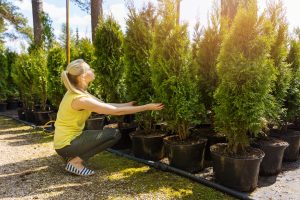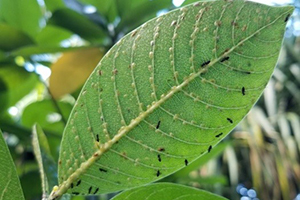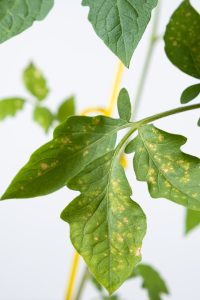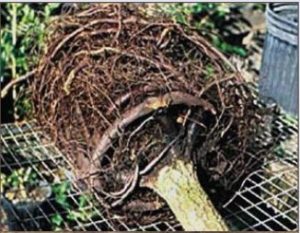So you’ve researched for weeks, and even consulted the Florida-Friendly Landscaping Plant Guide to figure out which plants should do best in your garden based on how much sun and water they’ll get. Now you’re at the nursery faced with rows from which to choose. How do you know EXACTLY which plant to select?

Should you get the biggest one, the one with the most flowers, or the one that is a little droopy and lopsided but less than half price on the clearance rack? Read on to find a few helpful tips that will set you and your new plant up for success.
First, no matter whether it’s an annual, perennial, shrub or tree, look for full form and even development.
Generally, the plant that has received the most light is more compact. Form is particularly important when selecting trees. The canopy should be aesthetically pleasing and evenly developed, indicating it was grown in the open with ample room. A lopsided tree, or one with dead branches on one side is a red flag. Another thing to notice on a tree is that it isn’t topped. A topped tree will have its main central leader that extends upward out of the trunk cut flat across. Except for some fruit trees, topping is an inappropriate method of reducing the size of the canopy. Topping uses heading cuts through woody tissue several years old. This method results in decay and a weak structure over time.

Credit: UF/IFAS

Second, look carefully at the leaves.
Check for insect damage and disease. Avoid plants with infested, distorted, mottled, spotted, or otherwise damaged leaves. Take time to examine the stems, undersides of the leaves, and in small crevices. Look for any signs of insects that shouldn’t be there. Scout for miniscule crawling critters (thrips), black, brown, or white raised dots that scrape off with your fingernail (scale), fine spider webbing (spider mites), or white fuzzy substance (mealybugs). Look for abundant foliage with good, rich color. Yellowing, mottling, or brown spots can indicate stress such as nutrient deficiencies, fungal issues, or disease. Buying infected plants not only hurts the plant you’ve added to your landscape, but it can also spread the insects and disease to other plants in your garden.
Lastly, smart buyers evaluate root systems thoroughly.

Check how well each plant fills its allotted space. Gently hold the plant on its side and slide it out of the pot. Ideally, you should see a mix of roots and soil. White roots are healthy roots but if you see roots coming out of the pot, or a solid mass of white, fibrous roots encircling the pot the plant is too heavily rooted. On a rootbound plant, some of the roots will need to be cut away before planting, which could set the plant back a bit. If the plant doesn’t slide from the pot and soil spills out, or if the plant seems small in its pot and is surrounded by soil, it is probably not sufficiently rooted. Trees with severe circling roots should not be planted at all. Roots circling close to the trunk can eventually slow growth and girdle the trunk.

Selecting healthy specimens and placing them in the appropriate location is crucial for achieving a successful landscape.
While low-quality plants may seem like a budget-friendly option, they often underperform and require more resources to restore them to their optimal state. Good quality nursery plants offer additional benefits. These plants have a higher chance of thriving after being planted, establish themselves faster, and have a longer lifespan in the landscape. Happy plant shopping!
 4
4
